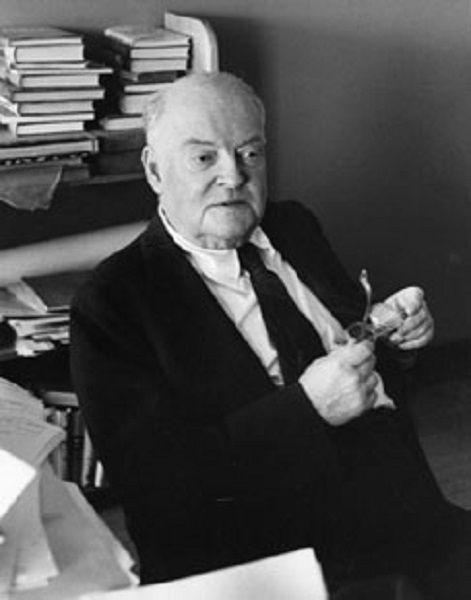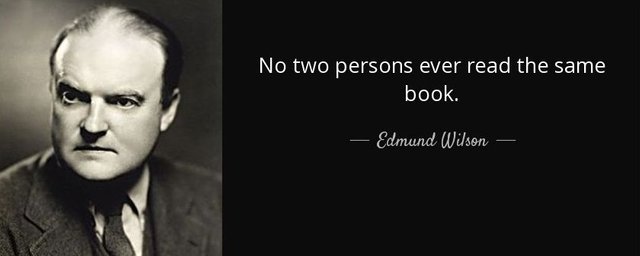The symbolism trough the eyes of Edmund Wilson
With his literary-analytical books, American writer Edmund Wilson, who lived from 1895 to 1972, became one of the early representatives of the so-called "New Critique" and retained his aesthetic influence until the middle of the 20th century. A central place in his creative heritage, however, is the comparative study "The Castle of Axel", dedicated to the traditions of symbolism. The book was published in New York in 1931 and quickly placed Wilson in the first line of American literary thought. To clarify the essence of symbolism, the writer follows the development of the artistic ideas that led to the emergence of this aesthetic direction. For him, symbolism is not merely a downplaying or further development of Romanticism, but rather its correspondence, a second influx of the same stream. Romanticism is a rebellion of the personality. Classicism, which is a reaction to politics and morality, means absorbing the individual from society, and in art it is the ideal of objectivity. In Miletant's "Misanthrop" or in Swift's "Gulliver's Travels", the creator is out of the picture, he would find it a bad artistic taste to identify himself with the character or to settle between the reader and the story, and to express his personal emotions. But in Reet of Chateaubriand or in Byram Harold, Byron, the writer becomes his own character, his personality and his emotions are already presented as the main subject that deserves attention. In any case, the poet of Romanticism is always busy or with his personal sensibility, as in Wordsworth, or with his personal will, as with Byron, and he finds a new language to express their mystery, their conflict and confusion. The field of literature has been moved from the universe, perceived as a machine, and from society, perceived as an organization, in the soul of the individual.

In the middle of the nineteenth century science was rapidly developing and mechanistic ideas were coming back into fashion. As a result of evolutionary theory, man is overthrown by the heroic pedestal that the romantics have raised him to become a helpless animal, still so negligible in the universe and in the hands of the forces around him. Mankind is conceived as a random product of heredity and the environment and can only be explained by them. This doctrine of literature is called naturalism and is applied in practice by writers such as Zola, for whom writing a novel means something like carrying out a laboratory experiment. What Edgar Poe particularly needed for the French is his distinction from most other romanticists in the English-speaking countries: his interest in the theory of aesthetics. The French have always thought about literature much more than the English; they always want to know what they are doing and why they do it - their literary criticism has played the role of a constant interpreter and leader. And it is in France that the literary theory of Poe, which, apparently, no one else has paid attention to, was first studied and explained. Thus, although the motives and means of symbolism were known in English literature, the very direction, due to the fact that it originated in France, has a deliberately conscious aesthetics that makes it different from anything written in English. We have to go back to Coleridge to find the figure comparable to the symbolist leader Stefan Malmerme. Paul Valerie tells Malarme that he is the greatest French poet of his time, and probably the most famous. But Malarmem was not quite known, he taught English to feed himself, wrote a little and published even less. Still - ridiculed and denied by the reader who repeated that his poetry was foolish and at the same time irritated by his seriousness and stubbornness - from his small Paris apartment where he accepted every Tuesday Malarme had an incredibly great influence on the young writers of the end of the century, both English and French. Here was the living room, which was also a dining room, on the fourth floor of Rome Street, where the locomotive whistles were heard through the windows and mingled with the literary conversations; Malarme, with his sunny, thoughtful gaze from beneath his long eyelids, always biting a cigarette, to bring a little smoke, as he liked to say, between the world and himself, spoke of the poetry theory with a soft, melodious and unforgettable voice. It was a peaceful and almost religious atmosphere. Malarme felt the pride of inner life, one of his friends said; his temper was patient, arrogant and despotically gentle. He always thought before he spoke, and always said things in the form of a question. Next to him sat his wife and embroidered, the door opened his daughter. Here came Degas, Paul Valerie, Paul Claudel, Remy de Gurmont, Andre Gidd, Oscar Wilde and Yeats. And Malarme was a true saint in the literature, he had set an almost impossible goal and pursued it without compromise or deviation. His whole life was devoted to the effort to do something through the language of poetry that has not been done so far. "Give the fullest sense to the crowd," he wrote in a sonnet dedicated to Edgar Poe.

Consequently, one of the main goals of symbolists is to suggest things instead of clearly communicating them. Every poet has his own unique personality, every moment of his life has his own unique tone, his particular combination of elements. The task of the poet is to find or find that particular language that alone will be able to express his personality and feelings. Such a language must use symbols. What is so special, so elusive and so vague, can not be expressed with immediate declarations or descriptions, but only through a continuous line of words and images that will tell the reader. The very symbolists, who have the idea of producing effects through poetry such as those in music, tend to think that these images have some abstract value, like musical notes and chords. But the words of our speech are not notes and, in fact, the symbols of symbolism were metaphors, independent of their additional meanings, for from one moment onwards one simply can not enjoy the poetry of color and sound for themselves: one must guess what the images mean. And symbolism can be defined as an experience through carefully selected means, a complex association of ideas represented by a mixture of metaphors, to convey unique human feelings. According to Edmund Wilson, the school of symbolism was originally spread only in France, especially in poetry of esoteric character, but over time it had penetrated the entire western world and its principles began to be applied to an extent that even its most enthusiastic creators did they foresee? Today, the work of writers like Thomas Sternz Eliot, James Joyce and Gertrude Stein is widely understood as a continuation or addition of symbolism. The literary history of our time - Edmund Wilson completes - represents the development of symbolism and its fusion or struggle with naturalism.
Axel's Castle is a great sample of American literary criticism. Wilson introduces six modernists of his time. Great article, keep up the good work!
Thank you :)
You got a 6.70% upvote from @postpromoter courtesy of @godflesh!
Want to promote your posts too? Check out the Steem Bot Tracker website for more info. If you would like to support the development of @postpromoter and the bot tracker please vote for @yabapmatt for witness!
Thank you :)